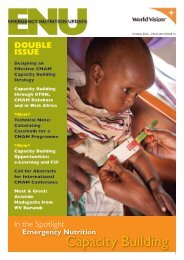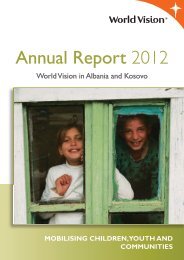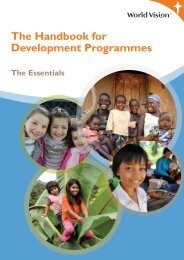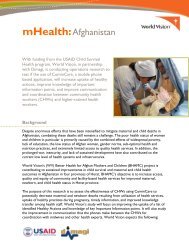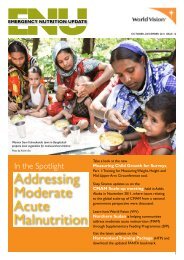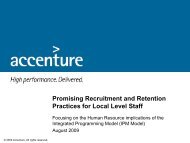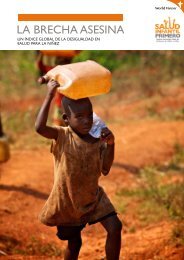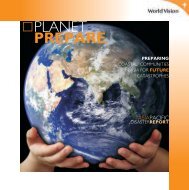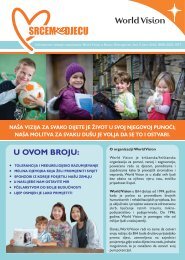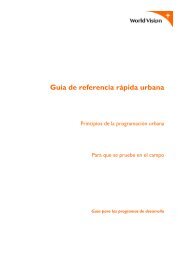the right to inclusive education for children with disabilities
the right to inclusive education for children with disabilities
the right to inclusive education for children with disabilities
You also want an ePaper? Increase the reach of your titles
YUMPU automatically turns print PDFs into web optimized ePapers that Google loves.
[7] Children <strong>with</strong> severe mental or physical <strong>disabilities</strong>, unable <strong>to</strong> receive treatment in special schools, canbe treated in o<strong>the</strong>r institutions as appropriate.[16] Educational-teaching staff shall endeavor that students <strong>with</strong> <strong>disabilities</strong> do not quit school. If <strong>the</strong>y do, asprovided ... <strong>the</strong>ir <strong>education</strong> can continue at home, if a parent desires so. Normative Provision of Pre-UniversityEducation (December 2002) not only ensures <strong>the</strong> <strong>right</strong> of <strong>children</strong> <strong>with</strong> <strong>disabilities</strong> <strong>to</strong> be educated in threeways, but also puts in practice <strong>the</strong>ir belonging in<strong>to</strong> mainstream schools.In this regard, Article 57 of <strong>the</strong> normative provision states: [10] Students <strong>with</strong> <strong>disabilities</strong>, proved <strong>to</strong> bein that condition by <strong>the</strong> health authorities are entitled <strong>the</strong> <strong>right</strong> <strong>to</strong> <strong>education</strong> in mainstream schools, 1-2students per class. For <strong>the</strong>se students <strong>the</strong> school takes action and makes overall ef<strong>for</strong>ts <strong>to</strong> educate andintegrate <strong>the</strong>m in<strong>to</strong> <strong>the</strong> life of <strong>the</strong> classroom and school.[13] To assist and facilitate <strong>the</strong> work of teachers who teach in regular classrooms in which <strong>the</strong>re are students<strong>with</strong> <strong>disabilities</strong> (1-2 students per class), teachers can take advantage of one of <strong>the</strong> following alternatives:a) For each student <strong>with</strong> <strong>disabilities</strong>, <strong>the</strong> number of students in class is decreased by 3 (three);b) Teachers are reduced <strong>the</strong> weekly workload by 2 (two) classes;c) For every 4 (four) hours of instruction, <strong>the</strong> teacher is paid 1 (one) additional hour.In view of <strong>the</strong> process of integration and inclusion, article 57 of <strong>the</strong> NP, now provides a range of o<strong>the</strong>r legalobligations <strong>for</strong> <strong>the</strong> mainstream school, pertaining <strong>the</strong> implementation of <strong>the</strong> curriculum, academic curricula,textbooks, assessment of <strong>children</strong> <strong>with</strong> <strong>disabilities</strong> in <strong>the</strong>ir transition from one class <strong>to</strong> ano<strong>the</strong>r, etc. Theseobligations are as follows: [17]a) ... students <strong>with</strong> <strong>disabilities</strong> receive basic knowledge on simplified curriculums of 8-year <strong>education</strong>,tailored <strong>to</strong> <strong>the</strong>ir abilities and skills. Besides knowledge, <strong>with</strong> an expanded program of learning,disabled students are given <strong>the</strong> rudiments of simple practical professions.c) In implementing <strong>the</strong> textbooks and curricula, <strong>children</strong>’s needs and specifications are taken in<strong>to</strong>account. Their application is made creatively, suited <strong>to</strong> <strong>the</strong> difficulties that students present.12d) <strong>for</strong> individual students, whose condition is below <strong>the</strong> minimum level of curriculum or when <strong>the</strong>person represents entirely specific needs, work will continue <strong>with</strong> individualized <strong>education</strong> plans.[18] The integration of students <strong>with</strong> <strong>disabilities</strong> <strong>with</strong> students in mainstream schools, is a necessarycontemporary process, used in <strong>the</strong> practice of special schools and deemed as an important process inchild development. This process is mutual and in special occasions it can be transferred <strong>to</strong> full integration.[19] Direc<strong>to</strong>ries of special schools must create opportunities that <strong>for</strong> certain subjects, students <strong>with</strong> <strong>disabilities</strong>follow <strong>the</strong> lessons <strong>to</strong>ge<strong>the</strong>r <strong>with</strong> students of <strong>the</strong> mainstream 8-year school, establishing cooperative ties<strong>with</strong> <strong>the</strong>m. ... Besides teaching, <strong>the</strong>re must be organized common <strong>education</strong>al and recreational activities.[20] Assessment of <strong>children</strong> <strong>with</strong> <strong>disabilities</strong> is made by grades or syn<strong>the</strong>sizing expressions, just like <strong>for</strong> allo<strong>the</strong>r students, but <strong>the</strong>y pass from one level <strong>to</strong> <strong>the</strong> next <strong>with</strong>out failing.[21] At <strong>the</strong> end of eighth grade, students <strong>with</strong> <strong>disabilities</strong> in mainstream schools, in <strong>the</strong> final exams are <strong>to</strong>be tested under <strong>the</strong> special curriculum that was applied <strong>to</strong> <strong>the</strong>m. The components of <strong>the</strong> final exam <strong>for</strong> thiscategory of students, are compiled by <strong>the</strong> school itself, <strong>with</strong> <strong>the</strong> approval of <strong>the</strong> Department of Education.Although it came ra<strong>the</strong>r late, <strong>the</strong> Normative Provision of 2002, marks an important miles<strong>to</strong>ne in <strong>the</strong>process of improving <strong>the</strong> legal framework on <strong>the</strong> <strong>right</strong>s of <strong>children</strong> <strong>with</strong> <strong>disabilities</strong>, <strong>to</strong> be educated just like<strong>the</strong>ir normal peers. Its adoption, paved <strong>the</strong> way <strong>for</strong> <strong>inclusive</strong> <strong>education</strong> in albania. In this provision,<strong>for</strong> <strong>the</strong> first time it is clearly articulated <strong>the</strong> modern trend of integrating <strong>children</strong> <strong>with</strong> <strong>disabilities</strong> in<strong>to</strong>36 The <strong>right</strong> <strong>to</strong> Inclusive Education <strong>for</strong> <strong>children</strong> <strong>with</strong> Disabilities



